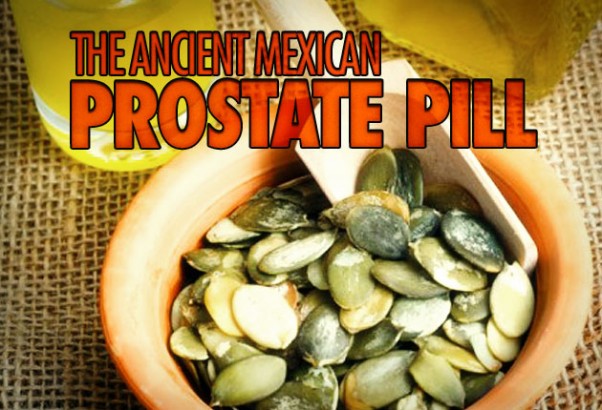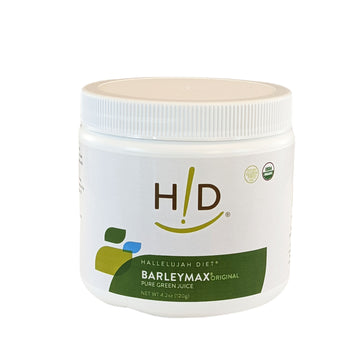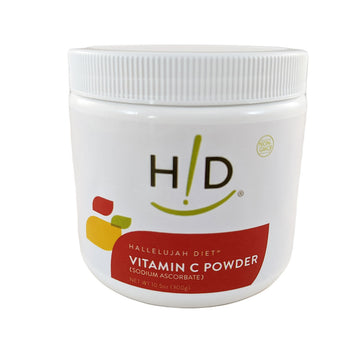In 2006, there was a debate between T. Colin Campbell, PhD (author of The China Study) and Professor Loren Cardain, PhD. Interestingly, Professor Cardain based his beliefs regarding protein on evolution and how man’s protein needs have evolved as man has evolved, with no scientific evidence to substantiate his beliefs, while Dr. Campbell based his beliefs on science — yet the two had very different ideas about protein and where it should come from. The debate was called “The Protein Debate”.
Dr. Loren Cordain maintainted that the protein needs of the body can only be adequately met through an animal based diet. Dr. T. Collin Campbell — whose views are shared by Hallelujah Acres, Dr. Esselstyn of Cleveland Clinic, and others — argued that all protein needs can be adequately met on a 100% plant-based diet. Who is right? In this Health Tip, I share Dr. Campbell’s opening statement in its entirety (I will share Hallelujah Acres' stand on the issue at a later date):
How Much Protein Does Your Body Need?
Determining how much protein to consume is not a simple exercise. Protein, which is distinguished from its macronutrient carbohydrate and lipid partners by its nitrogen (N) content, is an essential nutrient. Philosophical, cultural and economic concerns have influenced the discussion on how much protein to consume ever since it was first discovered and named in 1839 by the Dutch chemist, Gerhard Mulder. A good place to begin understanding how much protein to consume is with the recommended daily allowance (RDA, now named recommended daily intake, RDI) that has been repeatedly re-evaluated and re-established for the past 60-plus years by many official bodies. Probably the simplest method of determining recommended intakes, at least conceptually, has been the N balance study. An experimental determination is made of how much protein, analyzed according to its N content, must be consumed in order to compensate for the average daily amount of N lost from the body. After adjusting for the 16% Nitrogen content of protein and after adjusting upward the experimental mean by two standard deviations to include the needs of about 98% of the larger population, this gives an ‘allowance’, or recommendation, of 0.8 gm of protein to be consumed per day per kg of body weight, for both sexes. This is equivalent to 48 gm of protein for a 60 kg adult female (132 lb), or 56 gm for a 70kg (154 lb) adult male. Because this is based on the same dietary protein level for both sexes, I prefer these amounts to be expressed as percent of total diet calories. Along with the consumption of 0.8 gm of protein per kg/d, about 35 calories per kg/d is also consumed (i.e., 2450 calories for a 70 kg person). Therefore, 56 gm of protein per day represents 224 calories (1 gm of protein = 4 calories) or only 9.1% of the total 2450 calories consumed per day. Said another way, a 9% protein diet theoretically is in excess of the amount of protein needed by about 98% of the population. Although some adjustments have been made for growth, pregnancy and lactation, a dietary protein content of about 10% is generally considered adequate for good health, for both sexes and for all ages.
The Dangers of Excess Protein in Your Diet
The question, then, should not be how much protein is needed but how much protein in excess of the 10% dietary level can be safely consumed. This is a highly relevant question because, according to national surveys, diets containing from 11% to 22% protein (mean of about 16%) are routinely consumed by about 90-95% of the American population. Said another way, the question is what health benefits and/or risks might be expected by consuming protein in excess of the amount needed? At this point, it is worth nothing that most people, for a very long time, have been concerned about getting enough protein. Many have also assumed that animal-based foods are the best source of protein because of their higher ‘quality’ or ‘biological value’, an underlying assumption of my own doctoral research dissertation about 45-50 years ago. The scientific community has indeed encouraged this public assumption ever since the discovery of protein. Mulder, for example, in 1839 gave this N-containing substance its name from the Greek word, proteios, which means ‘of prime importance’. Justis von Liebig, a contemporary of Mulder, went on to state that protein was the stuff of “life itself”.
The famous German nutritional chemist Karl Voit and his many prominent students in the late 1800s and early 1900s, recommended that 100-130 gm per day should be consumed even though Voit, himself, found that 52 gm per day was sufficient for good health. Voit’s student, Max Rubner, also a prominent nutrition researcher, said that protein interchange was “the right of civilized man” while another Voit student, A. O. Atwater, went on to encourage similarly high protein intakes while he was founding the USDA laboratory in the U.S. These early nutritional scientists, ultimately becoming ‘fathers’ of their field, almost always equated protein with animal flesh. Although they acknowledged that plants also had protein, it was of “lower” quality, so they said, thus laying the groundwork for the idea that plant proteins had nutritional value only when they were carefully combined in order to compensate for their respective deficiencies of certain amino acids.
Protein vs. Plant-Based Diets
The personal biases of these early investigators often were expressed with considerable hostility and arrogance. The medical director of the British Empire Office in India, for example, offered that those who live on plant-based foods were of a”cringing and effeminate nature.” In sharp contrast, Professor Russell Chittenden of Yale University School of Medicine, offered a very different set of findings, as published in two large books in 1904 and 1907. He showed that a group of young military recruits could obtain excellent physical conditioning over a 6-month period, as examined in 15 strength and endurance tests, by consuming a mostly plant protein-based diet. Not to be misunderstood that it might be the training and not the diet that led to these results, he then showed even greater conditioning when a group of already fit athletes switched to a plant-based diet. These remarkable and highly significant findings came at the time when Voit and his students and associates were pushing for higher, not lower, intakes of animal-based protein.
Later, in 1922, the famed Dr. Benjamin Spock who was at that time a member of the Olympic crew team at Yale, was being advised along with his team mates to consume a high animal protein diet. He learned of professor Chittenden’s work at his university only many years later when he wrote to me shortly before his passing and wondered why his coaches had made no mention of their colleague’s work. Little did Spock know that, about that same time in the early 1920s, Chittenden was being severely chastised for his work by his professional colleagues. Was he, perhaps, of an effeminate nature? Let’s now return to the question of what happens when protein intakes are increased beyond 10% of calories, say from about 10% to 20% of calories, the range for most Americans. A variety of adverse health effects have been demonstrated and these effects are remarkably consistent among clinical, experimental (i.e., intervention), and observational type studies. At the clinical level, for example, animal-based proteins (primarily) act on fundamental biological systems such as acid-base buffering, hormonal messaging, and enzyme activities that set the stage for a wide variety of adverse health outcomes. Thousands of studies have demonstrated these effects. For example, the consumption of animal-based proteins can lead to a chronic condition known as metabolic acidosis, which has been known since the late 1800s. Secondary effects of this condition are extensive and include, for example, bone calcium loss to buffer the excess acid (thus weakening the bones) and inhibition of the critical enzyme that controls the formation of the ultimate vitamin D metabolite now known to be involved in a wide variety of health promoting effects.
Hormonal profile distortion, for example, includes elevated estrogenic hormone activities (higher estiradol and lower sex hormone binding globulin) and its corollary effects on breast cancer risk and other steroid responsive tissues. Also, animal protein consumption increases growth hormone activities like IGF-1 and IGF-2 that now associate with the promotion of multiple cancers. Altered enzyme activities can be quite dramatic, occurring within hours after consumption of increased amounts of animal-based proteins and, further, these effects can be sustained for long periods of time. These dietary protein effects are especially notable for an enzyme complex involved in a broad array of reactions, including chemical carcinogen activation, steroid biosyntheses and disposition and fatty acid metabolism. These clinical effects are consistent both with human intervention studies designed to control or even reverse serious chronic diseases and with human population studies. Increasing intakes of animal protein within the 10% to 20% range increases urinary calcium loss, elevates total and LDL cholesterol levels, increases cell replication and enhances DNA damage resulting from enzymatic activation of chemical carcinogens. These and many other clinical effects parallel higher incidence and/or mortality rates of osteoporosis, cardiovascular diseases, certain autoimmune diseases and various cancers, among other ailments. These findings are only a small sample of animal protein induced disorders and are cited here because of the consistency of evidence across clinical, experimental and observation type studies within the 10-20% range of dietary protein experienced by most Americans. Although these outcomes and observations mostly refer to the independent effects of protein, it should be noted that the isolated effects of individual nutrients usually represent only a small part of a much larger story. First, the activities of nutrients studied in isolation are often quite different than when they are studied in the context of food. Second, when animal protein-based food consumption is increased, plant protein-based food consumption is usually decreased. Thus associations of animal-based foods with various disease outcomes almost invariably include simultaneous contributions resulting from the absence of the protective factors in plant-based foods.
Plant based foods have a wide variety of constituents that tend to oppose, or re-balance, the adverse effects of animal-based foods on these fundamentally important biological systems. These are only a few of the effects of increasing total dietary protein above 10% of diet calories, mostly by the addition of animal protein-based foods. But these findings are cited here because (1) they show effects of animal-based protein on fundamental biological systems, (2) they are consistent across different types of studies and (3) they occur within the 10-20% dietary protein range. What makes this more generalized information especially compelling is its ability to explain a group of diverse yet remarkably profound diet and health observations reported during the past few decades. In population studies, for example, animal protein intake exhibits very impressive correlations (80-90%) with breast, prostate, ovarian, kidney and colon cancer, with increased disease risks appearing at very low levels of dietary animal protein (i.e., the regression line passes through the origin).
Observing Varying Levels Protein Intake and Related Outcomes
Similar correlations also exist with cardiovascular diseases, type I and II diabetes, hypertension, osteoporosis, multiple sclerosis and kidney stones, among other ailments—all within the 10-20% dietary protein range. Moreover, dramatic reversal, even cure, of advanced degenerative diseases as well as relatively non-fatal ailments, have been observed by switching away from animal protein-based foods to whole plant protein-based foods. The demonstrated reversal of advanced heart disease in humans is truly astounding, as is the 34 years-long control of multiple sclerosis progression. And finally, our own years-long series of experiments with laboratory rodents are especially informative of the fundamental effects of animal protein on experimental cancer development. When casein (cow’s milk protein), for example, is fed above the level that meets physiological needs, tumor growth progresses; when casein is fed at levels below 10%, tumor growth is suspended or reversed. That is, we could turn on and turn off experimental tumor development by feeding or withdrawing dietary casein at levels above or below 10% of calories, respectively. I am convinced that many of the most cherished assumptions of nutritional science can trace their origin to our long and unquestioned reverence for protein, especially for animal-based protein. Diets have been constructed and judged according to their inclusion of this treasured nutrient.
Diet and health policy has been structured in such a way so as to protect the consumption of animal-based protein. The first ‘official’ recommendation by the National Academy of Sciences in 1982 to decrease fat intake only to 30% of diet calories—even though the evidence at that time indicated lower fat intake was warranted—was to protect the consumption of animal protein-based foods. I know because, as a member of that committee, I wrote with a colleague the draft chapter on protein and cancer showing that animal protein intake was as much associated with cancer risk as was fat intake. This long-standing reverence for animal-based protein often seems to be very personal, perhaps macho building, for some individuals. In point of fact, it may surprise many that when done right; consuming whole plant-based foods are known to lead to better not lesser athletic performance and physical fitness.
Our conclusion from these many observations is that animal protein, when added to diets already containing 10% protein, has the potential to promote the development of a wide variety of serious and oftentimes fatal diseases—not only because of the direct effects of protein but also because of the many parallel effects of companion nutrient imbalances created by animal-based foods simply to get access to the extra protein. I find that 10% total dietary protein, which has been long recommended by multiple policy committees and acknowledged in scientific reviews, is not only adequate but also is relatively devoid of risk of serious diseases and other ailments. It just so happens that 10% dietary protein is the same level that is typically found in a diet of varied whole plant-based foods. Increasing dietary protein above this 10% level generally means adding or substituting animal-based foods for plant-based foods but doing so invites a plethora of adverse health effects.
To be very clear, I believe that total dietary protein should be 10% of calories, with virtually all of it being in the form of plant-based protein. It is clear to me that a diet comprised of whole vegetables, fruits and cereal grains (unless otherwise contraindicated by allergic responses) with little or no animal-based foods, resulting in a dietary protein level of about 10%, IS AS NEAR TO AN IDEAL AS ONE CAN GET.
Personal Testimony
Thirty-seven years ago, at age 42, I was told I had colon cancer. At the advice of Evangelist Lester Roloff, I eliminated all animal-sourced protein foods from my diet and adopted the 100% plant-based diet God gave that first couple in Genesis 1:29. The Genesis 1:29 diet is a pure, plant-based diet, containing zero animal protein foods. On that 100% plant-based diet, within one year of adopting it, not only was my cancer gone, but also gone were all the other physical problems I was experiencing at the time I made the diet change. I am still going strong 37 years later on this same 100% plant based (Hallelujah) diet — and I will soon will celebrate my 80th birthday. Twenty-one years ago, when Rhonda and I started the Hallelujah Acres ministry and started promoting The Hallelujah Diet, a diet based on God’s Genesis 1:29 diet, I warned the Christian community and anyone else who would listen, that high protein animal sourced foods were the single most dangerous foods one could consume. This teaching caused an uproar in the Christian community. It was as if I had tried to take Jesus out of God's simple plan of salvation! Yet the evidence of physical improvements that occur when people eliminate animal sourced foods from their diet, and convert to a 100% plant-based diet, continues to pile up here at Hallelujah Acres.
Since we started Hallelujah Acres 21 years ago, tens-of-thousands of people have written to share with me that when they eliminated animal-source foods from their diet and adopted a 100% plant-based diet, they too saw the elimination of almost all their physical problems.
Did You Know? One ounce of BarleyMax Original powder (14 servings) has 100% of the protein in one ounce of steak!
In fact, we have testimonies of over 170 different physical problems simply going away after folks adopted The Hallelujah Diet, a pure vegetarian diet, totally free of all animal-sourced protein foods, and relying solely on plant foods to supply all protein needs. I find it refreshing that Dr. Campbell, a scientist who has been studying the relationship of diet to disease for more than 50 years, shares scientific evidence that supports what Hallelujah Acres has been proclaiming all these years. My question is: “How much longer will the Christian community continue to cling to an animal-based diet, the very diet that is responsible for the bulk of the physical problems for which we pray for healing and deliverance each week?”
If you are not already on The Hallelujah Diet, may I encourage you to give it a try! Hallelujah Acres is a Christian organization that teaches health from a Biblical perspective! Hallelujah Acres is trying to help the Christian community (as well as anyone else who will listen) realize that God's original diet, as given by God in the Bible in Genesis 1:29, was His perfect plan for the proper nourishment of His human creation. Multitudes have made this diet change that we teach here at Hallelujah Acres, and experienced normalization of weight, increased energy, as well as the elimination of almost all their physical and even psychological problems.








